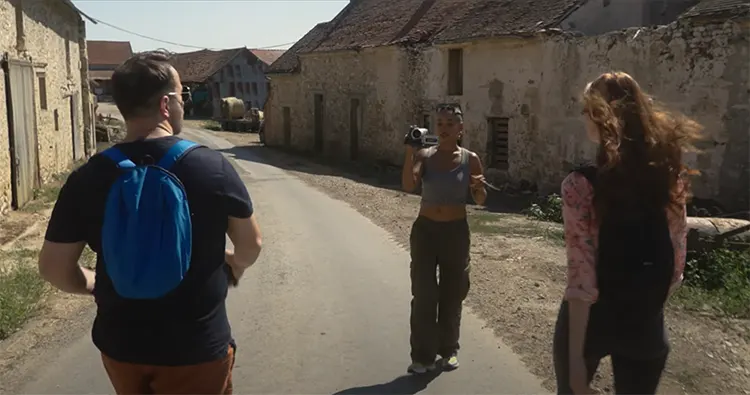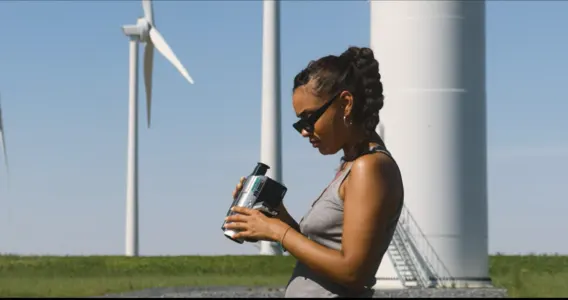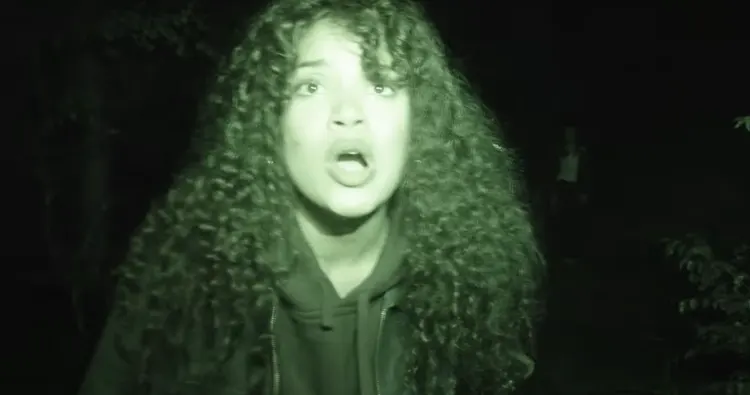The found footage craze may be a thing of the past, but the genre has never really disappeared from the screens, and today it delivers more farts than pearls. Hugo König’s debut feature, Night Shot, falls into the latter category. It wasn’t a perfect film, but the atmosphere, the masterful and always visible direction, coupled with a technical challenge (namely a single sequence shot) and a location that was more than exploited, made it a film in the upper tier of found footage. With his second feature, Hugo König stays within the genre, but doesn’t repeat the Night Shot formula. On the contrary, with Gliitch he takes a different approach to found footage and, although the first attempt didn’t turn into a master stroke, the director once again manages to surprise with what is, on the surface, a more conventional found footage than Night Shot. Conventional in form, because in content, it’s clear that Hugo König is once again at ease with the genre.

In Gliitch, exploration is once again the order of the day, this time in a rural setting. the haunted sanatorium, replaced by an equally haunted forest, into which youngsters plunge equipped with flashlights and cameras. A classic basic pitch, then, which takes its time to set up, a little too much so, in fact. Although it’s interspersed with a nocturnal stroll through the forest that sets the mood, Gliitch’s first half-hour proves uninteresting and is slow to reveal the plot’s triggering element, namely the meeting between the young explorers and their guide. The first half is admittedly sluggish, but this doesn’t detract from the final result, the more Gliitch progresses, the more interesting the film becomes. Already in its atmosphere.
Like Night Shot, there’s a sense of preparation and location scouting, which is once again exploited to marvelous effect. Although Gliitch is never really scary, Hugo König multiplies the oppressive nocturnal scenes, whether in the forest or in the abandoned places that populate it, which have their effect, like the particularly stressful boat crossing or the guide’s total breakdown, which drags on a little but has its effect and adds to the mystery. Gliitch is mysterious. From start to finish, the director manages to lead the viewer down a succession of false trails, constantly calling into question the real nature of the threat.

Even better. Hugo König manages to lose the viewer completely in the last part of the film. It’s in these last twenty minutes that the Gliitch of the title takes on its full meaning. The director doesn’t use glitch as a gimmick, but rather puts it at the service of his set up, and an editing with well-executed transitions, which, like Night Shot, proves to be controlled and always legible. The last part of Gliitch doesn’t just lose the viewer, it buggers up the genre of found footage by tipping over into a kind of almost experimental trip that mixes horror and psychological drama, where the camera constantly changes narrative point of view right up to an unexpected final twist that calls into question the nature of the glitch, a failure in the power supply to an electronic circuit, which isn’t necessarily computer-related.

Like Night Shot before it, Gliitch isn’t perfect. Its uninteresting first half-hour is regrettable, as are its escalations of tension, which are present but never reach a climax, and the film is never frightening. There’s no reason to sulk over Gliitch, as it demonstrates that Hugo König doesn’t make found footage purely out of economy of means or convenience. On the contrary, the director once again proves his ability to add a little something to the genre, without going overboard. What remains to be seen is a master stroke.
Second feature film, second found footage for Hugo König. While not without its faults, Gliitch once again demonstrates the director’s ability to deliver a successful film of the genre that ranks right up there.





